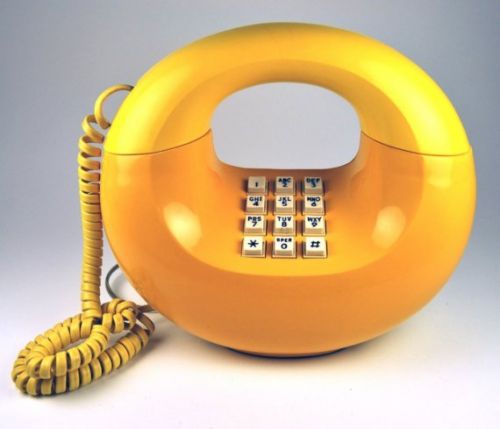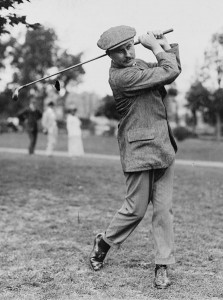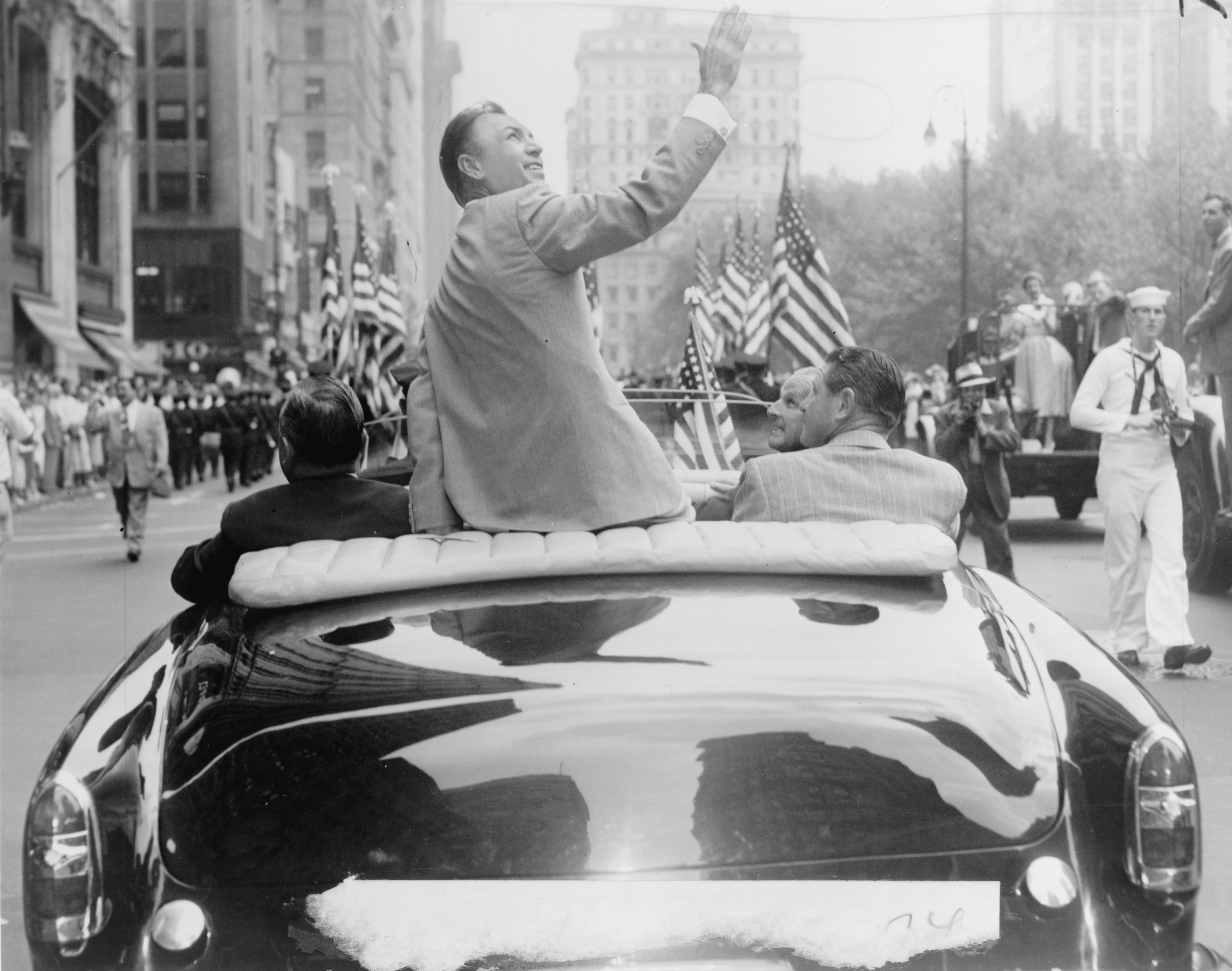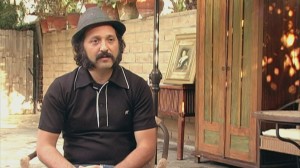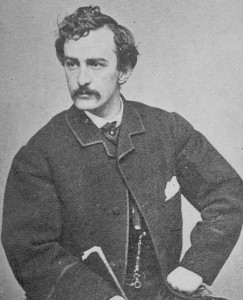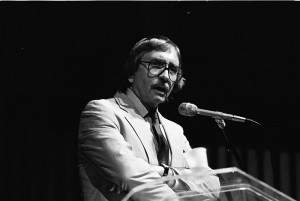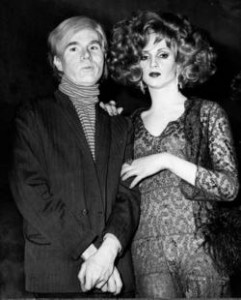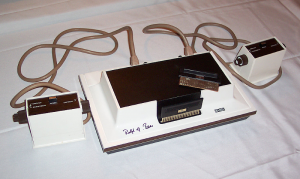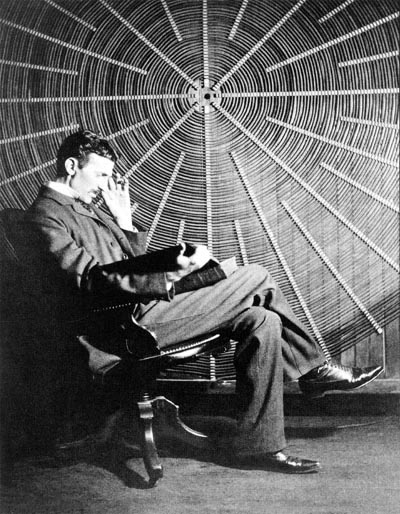The introduction of push-button telephones at the 1962 World’s Fair in Seattle.
You are currently browsing the yearly archive for 2010.
Connecticut resident Delight Beecher may not have been the most well-known member of her famous family, but she had an interesting life just the same. She was a part of the clan best known for celebrated preacher and abolitionist Henry Ward Beecher (who was ensnared in an adultery scandal in the 1870s) and Harriet Beecher Stowe, author of Uncle Tom’s Cabin. Delight, who outlived both of her younger relations and never visited a dentist in her life, was the subject of a brief article in the May 18, 1901 Brooklyn Daily Eagle, on the occasion of having reached the 100-year-old mark. (She would live until 103.) An excerpt:
“Mrs. Delight Beecher Upson, a cousin of Henry Ward Beecher, celebrated the 100th anniversary of her birth at her home, in Burlington, near this city yesterday. The event was made the occasion of a public celebration.
Mrs. Upson delights in talking of her famous cousin, Henry Ward Beecher.
Mrs. Upson is well-preserved. Aside from deafness, her faculties are only slightly impaired. She prides herself on never having required the services of a dentist. Her physical endurance is remarkable. One day last week she walked to a neighbor’s home and back, a distance of half a mile.
Mrs. Upson’s mind is clear and she tells with precision important events of the earlier years of the nineteenth century. Her maternal grandfather served in the Revolution, and her nephews took part in the War of 1812. She has always been an ardent Congregationalist.
Two years ago Mrs. Upson visited Collinsville, where she saw a railroad for the first time in forty years.”
Tags: Delight Beecher Upson, Harriet Beecher Stowe, Henry Ward Beecher
For the last dozen years, ticker-tape parades in New York City have been reserved for when the Yankees or Giants win a championship, but they used to be frequent, even excessive, occurrences.
The first such parade, which took place in 1886 for the dedication of the Statue of Liberty, was an unplanned, spontaneous occasion. Since then, Theodore Roosevelt (1910), Albert Einstein (1921), Charles Lindbergh (1927), Amelia Earhart (1928, 1932), Jesse Owens (1936), Howard Hughes (1938), Winston Churchill (1946), Haile Selassie, (1954), the Apollo 11 astronauts (1969) and Nelson Mandela (1990) have been celebrated in such fashion.
Luminaries all, but there’ve been lesser lights who’ve received parades. Amelia Gade Corson (1923) was the first mother to swim the English Channel. Prince Ludovico Spado Potenziani (1928) was the governor of Rome. Viscount Harold Alexander of Tunis (1947) was the governor general of Canada. William V.S. Tubman (1054) was president of Liberia. And Sammy Sosa (1998) was Sammy Sosa (sort of).
Although only one scientist has ever received a ticker-tape parade in NYC (the aforementioned Einstein), there have been loads of athletes to be so honored. The great photo above by Dick DeMarsico of the New York World Telegram captures golfer Ben Hogan mid-parade as he’s celebrated after his victory at the 1953 British Open. You can see more of DeMarsico’s wonderful work here.
Tags: Ben Hogan, Dick DeMarsico
Labeling what is ostensibly an art documentary as the best English-language comedy of 2010 might sound odd, but then so little of the debut film by acclaimed British street artist Banksy is truly ostensible and so much of it strange and wonderful. What supposedly started as a portrait about graffiti guerrillas by French-born Los Angeles clothier Thierry Guetta morphs instead into a profile about Guetta himself, who decides impetuously to become a celebrated artist just like his heroes, despite a lack of training and experience. Or is it all just an elaborate Banksy prank excoriating the trendiness of the art world?
Guetta sells second-hand clothes in L.A. at ridiculous mark-ups and is never without his trusty video camera, filming everyone and everything for no apparent reason. As he explains how this unusual habit led him to being the go-to assistant/cameraman for street artists after a meeting with Shepherd Fairey, he frequently fractures the English language. This happens not only because English is his second language but also because he is apparently something of an imbecile. Through Fairey, Guetta meets all the other major players in the global graffiti world, including the reclusive Banksy. The two become very close. Late in the game, Banksy begins to realize that Guetta, who is visiting him in Britain, may be less a filmmaker than a mentally ill man with a camera. In order to be rid of him, Bansky encourages Guetta to return to Los Angeles and create some art for a small show that Banksy will arrange.
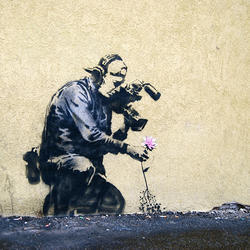 But Guetta thinks bigger, immediately transforms himself into artist “Mr. Brainwash,” mortgaging everything he owns to hire a large staff for a Kostabi-ish assembly line and rent a humongous space for the exhibition. He ultimately creates a gigantic assemblage of knock-off Pop Art that turns the sprawling gallery into a Warholian vomitorium. As the show’s opening approaches and one disaster after another occurs, the suspense grows: Will Mr. Brainwash be able to sell his art for many times its worth as Guetta did with ratty T-shirts and torn jeans? If he is successful, does it reveal that much of what goes on in the art world is a con? Or is it all just a Banksy con? That the latter appears to be true doesn’t in any way diminish the great amusement of this film. Actually, it just enhances it.•
But Guetta thinks bigger, immediately transforms himself into artist “Mr. Brainwash,” mortgaging everything he owns to hire a large staff for a Kostabi-ish assembly line and rent a humongous space for the exhibition. He ultimately creates a gigantic assemblage of knock-off Pop Art that turns the sprawling gallery into a Warholian vomitorium. As the show’s opening approaches and one disaster after another occurs, the suspense grows: Will Mr. Brainwash be able to sell his art for many times its worth as Guetta did with ratty T-shirts and torn jeans? If he is successful, does it reveal that much of what goes on in the art world is a con? Or is it all just a Banksy con? That the latter appears to be true doesn’t in any way diminish the great amusement of this film. Actually, it just enhances it.•
Tags: Banksy, Shepherd fairey, Thierry Guetta
Accounts from Gene Smith’s 1992 history, American Gothic, about a pair of times when President Lincoln watched performances by the noted actor and his future assassin, John Wilkes Booth, on stage in Washington D.C. The first “meeting” took place in 1863.
___________________________
John was about to turn twenty-five, and of a theatrical stature to set himself up as a more or less permanent resident star in a leading city. He chose Washington. The wartime capital was bursting with people, and entertainments of any type drew capacity crowds. He opened as Richard III at Grover’s Theatre, on April 11, 1863, billed as “The Pride Of The American People–The Youngest Tragedian In The World–A Star Of The First Magnitude–Son Of The Great Junius Brutus Booth–Brother And Artistic Rival Of Edwin Booth.” President Lincoln attended. The National Republican said he scored a “complete triumph” and “took the hearts of the people by storm.” A day later the paper added that his playing created a sensation. “His youth, originality, and superior genius have not only made him popular but have established him in the hearts of the Washington people as a great favorite.” The National Intelligencer said he owned “that which is the grand constituent of all truly great acting, intensity. We have only to say that this young actor plays not from stage rule, but from his soul, and his soul is inspired with genius. Genius is its own schoolmaster: It can be cultivated but not created.•
___________________________
Accompanying President Lincoln and his wife to the theater one night were the two daughters of Cassius M. Clay, U.S. Minister to Russia. Their mother was an old friend of Mary Todd Lincoln and when they sent in their cards to her she responded with the invitation. As the party drove, a piece of iron suddenly sprung up and pierced the carriage seat between the President and his wife. For a moment an alarmed Mary Lincoln thought it was an attack. Mary Clay asked the President what measures he took to be guarded–no czar of Russian would go through a St. Petersburg street without cavalry escort and with police, detectives, and plainclothesmen along the route, and for good reason–and the President said, “I believe when my time comes there is nothing that can prevent my going.”
The star performer played a villain and twice “in uttering disagreeable threats came very near” and appeared to point to the President. “When he came a third time I was impressed by it, and said, ‘Mr. Lincoln, he looks as if he meant that for you.'”
“‘Well,'” he said of John Booth, “‘he does look pretty sharp at me, doesn’t he?'”•
“There are millions of them everywhere…spying on us…watching…waiting…when will they pounce?” asks the announcer of this trailer for the inexplicable 1977 feline-centric horror film, The Uncanny. In the interest of fairness, there’s an adorable cat video below. They’re not all evil.
Cat Mimics Girl’s Hand – Watch more Funny Videos
This isn’t suprising at all, is it? From a new interview in Vice:
“Do you have a specific writing space?
I do my writing in my head. There are tables around for whenever I feel like writing something down. I don’t care where I do it. It’s called a manuscript, so I write by hand.
That’s pretty old school.
I don’t believe in all those machines.
And the internet?
I know it exists. I don’t use it.
Do you have a cell phone?
No. It’s a waste of time. I might as well watch television. I walk along the streets of New York and I find people bumping into each other, bumping into things, and they have these things in their ears or in their face. They’re not seeing anything of the real world.”
Tags: Edward Albee
Daniel Polevuy uses Photoshop and a wry imagination to mash up old photographs and modern pop culture, creating glorious anachronisms. Above is an old timey still of a school band that’s been given the KISS treatment. See more of his “Amazing Photo Collages” here. (Thanks Boing Boing.)
Tags: Daniel Polevoy, KISS
A TV commercial from Mego for its unfortunately titled ’70s board game, Ball Buster. “It’s a family game. Fun for children…and for adults it’s exciting.” Before the commercial is over, you know what name the husband will call his wife. Not even Scott Joplin’s amazing ragtime music can class this one up.
Tags: Scott Joplin
Dear Edna,
Stayed in sitting room all day yesterday on sofa — not good last night– ok this morning.
Oh I do want to get out & back to work–but the bosses say soon.
Herman came Tuesday. Went home Sat. Just got your card–write me often.
Dad
Tags: Edna Mae Williams

"She swung a handsome unbrella in one hand with an air of quiet determination." (Image by Amelia Van Buren.)
A willowy widow who was wronged wickedly wielded an umbrella to gain a measure of revenge against a pair of railroad executives in Brooklyn in 1889. The Daily Eagle provided a blow-by-blow account in its March 31 edition (and the Times also provided a report of the unusual confrontation.) An excerpt:
“A tall, thin, willowy blonde woman, elegantly attired in a black dress, a black hat, a close fitting green tailor made coat, with a fur boa around her neck, walked uneasily back and forth in front of the entrance to the offices of the Union Elevated Railroad, 31 Sands street, on Friday morning. It lacked a few minutes of being 9 o’clock and it was apparent that she was expecting some one at that hour. She swung a handsome unbrella in one hand with an air of quiet determination.
She had not long to wait. Presently a carriage drove up to the curb and out stepped Major Stephen Pettus, the secretary andf treasurer of the Union Elevated Railroad, and Mr. Joseph Elliott, his brother in law and one of the directors of the road.
‘You scoundrel! You deceiver! You heartless betrayer!,’ screamed the tall, thin woman, as soon as she caught sight of Major Pettus and Mr. Elliott.
There was a tremendous scene forthwith and a crowd of people, who had been hurrying toward the bridge, paused and gathered around to listen. Messrs. Elliott and Pettus made some rapid and vehement remarks, and the tall young woman lent emphasis to her derogatory statements concerning the two railroad magnates by brandishing her umbrella and whacking and thumping Messrs. Elliott and Pettus with it as fast as she could. She first directed her attack against Major Pettus, and when Mr. Elliott stepped between she turned her attention to him and he had to put up his arm to defend his head and shoulders from the shower of blows she rained upon him.
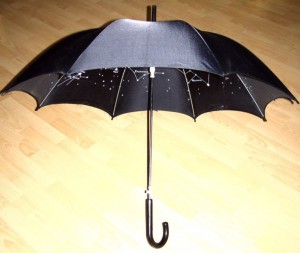
"He had to put up his arm to defend his head and shoulders from the shower of blows she rained upon him." (Image by Jean D'Alembert.)
The street was full of people and a big crowd collected in a twinkling. There was a great deal of excitement. An officer was close by, but did not interfere and no arrests were made. Messrs. Elliott and Pettus escaped upstairs into the railroad offices and the woman went away.
In the afternoon when the reporter called he was informed by a servant that Major Pettus was not at home and that Mrs. Pettus was entertaining company in the parlor and could not be disturbed. In the evening Mr. Elliott was found at the house. He said that Major Pettus had been sick all day and was lying in bed asleep. Mr. Elliott was asked to relate the particulars of Friday’s sensational occurrence. He said:
‘Major Pettus and I are the persons who were assaulted. This woman was waiting for us and when we reached the sidewalk in front of 31 Sands street she applied every conceivable derogatory epithet to us.’
‘What is the name of the young woman?’
‘She is Mrs. Hannah Martin Southworth. She is a widow, I believe. I do not think she has any children. I do not know whether her husband ran away or is dead. If he is dead he is probably in heaven.’
‘You know her?’
‘Oh, yes. I have known her for several years.’
‘Did Major Pettus also know her?’
‘Yes, he knew her well.’
‘What was the nature of her charges against you?’
‘That is a private matter which I do not propose to discuss.’
He positively refused to discuss the nature of Mrs. Southworth’s charge against Major Pettus, on the ground that the Major was a married man, whose domestic affairs ought not to be dragged into the newspapers under any circumstances.
‘This woman merely wants the earth. She is a holy terror.'”
Tags: Hannah Martin Southworth, Joseph Elliott, Major Stephen Pettus
WARHOL MEMORABILIA – $20000
“Stickball cap of Warhol Superstar CANDY DARLING. Yellow in color, dated 1956 and reads” LONG ISLAND STICKBALL” and has “JIMMY SLATTERY” written on the underside of the bill. $20,000 firm or will consider something of equal non-cash value.
$100 bill autographed by Warhol Superstar HOLLY WOODLAWN. Has a still from the Warhol produced film “TRASH” of Holly collaged over Ben Franklin and a BRIGHT RED LIPSTICK KISS by Holly. $8,000 firm or will consider something of equal non-cash value.”
Tags: Andy Warhol, Candy Darling, Holly Woodlawn

Bob Rafelson says that during the shoot, Arnold Schwarzenegger told him that some day he would become California Governor.
A movie about shady land deals and stormy bodybuilding competitions in 1970s Birmingham, Alabama, Bob Rafelson’s Stay Hungry has such an eclectic cast, such strange tonal shifts and such general oddness of all sorts that it never found the audience it deserved. It’s by no means a perfect movie but still one that should be seen, if only for its audacity to team Jeff Bridges, Sally Field, Arnold Schwarzenegger, Robert Englund and Fannie Flagg.
Craig Blake (Bridges) is a well-born, sad-faced Southern gent who’s been in mourning for two years, since the accidental death of his parents. Searching for something to occupy his time, he gets roped into a dubious land-acquisition scheme in which some good ol’ boys are buying up local businesses and fleecing the mom-and-pop owners. Blake is charged with purchasing for peanuts a dingy gym, but his mission becomes complicated when he falls for one of the establishment’s fetching employees (Field) and befriends a hulking bodybuilder (Schwarzenegger) who’s training there. These two and others at the gym become an unlikely surrogate family for Blake, and he introduces them into his genteel and snobbish society at some risk.
Stay Hungry is teeming with talent, even if it doesn’t always know what to do with it, sometimes clumsily mixing comic scenes with disturbing ones. But at its essence, it’s a gentle if eccentric story of a wounded man slowly realizing that he needs to move beyond his comfortable milieu if he’s to find the things he needs to live. In addition to that, there’s Robert Englund as an exercise instructor and Arnold Schwarzenegger dressed in cowboy garb playing a fiddle. (Available from Netflix and other outlets.)
More Film Posts:
- Classic DVD: Westworld. (1973)
- Classic DVD: Slacker. (1991)
- Strange, Small & Forgotten Films: Decasia: The State of Decay. (2002)
- Classic DVD: 32 Short Films About Glenn Gould. (1993)
- Classic DVD: Pickpocket. (1959)
- Strange, Small & Forgotten Films: Gates of Heaven. (1978)
- Classic DVD: Alice Doesn’t Live Here Anymore. (1974)
- Classic DVD: Playtime. (1967)
- Strange, Small & Forgotten Films: Last Night. (1998)
- Classic DVD: The Gleaners and I. (2000)
- Classic DVD: Sherman’s March. (1986)
- Strange, Small & Forgotten Films: The Bothersome Man. (2004)
- Classic DVD: Picnic at Hanging Rock. (1975)
- Classic DVD: Thieves Like Us. (1974)
- Classic DVD: Brief Encounter. (1945)
- Strange, Small & Forgotten Films: Police Beat. (2004)
- Classic DVD: The Killing. (1956)
- Strange, Small & Forgotten Films:Confessions of a Superhero. (2004)
- New DVD: The Exploding Girl.
- Strange, Small & Forgotten Films:Hi, Mom! (1970)
- Strange, Small & Forgotten Films: Targets. (1968)
- Classic DVD: Logan’s Run. (1976)
- Strange, Small & Forgotten Films: The Silent Partner. (1978)
- Classic DVD: Head. (1968)
- New DVD: Bad Lieutenant: Port of Call New Orleans.
- Classic DVD: The Phantom of Liberty. (1974)
- New DVD: Big Man Japan.
- Strange, Small & Forgotten Films: All the Vermeers in New York. (1989)
- Classic DVD: The Other. (1972)
- Strange, Small & Forgotten Films: “La Soufriere.” (1976)
- Classic DVD: Network. (1976)
Tags: Arnold Schwarzenegger, Bob Rafelson, Fannie Flagg, Jeff Bridges, Robert Englund, Sally Field
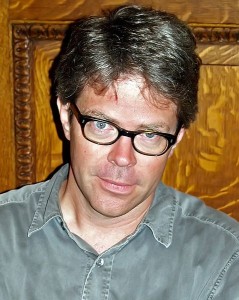
If you tell Jonathan Franzen to sign your book, "Dear Oprah," he has no choice but to do it. You fucking deal with it, Franzen! (Image by David Shankbone.)
I want to thank all of you who’ve generously supported the Mekons documentary that is being made by my old boss Joe Angio. His Kickstarter campaign has been a great success, and he’s raised enough money to begin the editing process in earnest. Now with just four days to go in the fundraising, every dollar he makes brings him closer to being able to completely finish the movie.
My guess is some Afflictor readers might like books more than music or film, so I wanted to point out that some of the writers who are featured in the doc have contributed autographed books that can be yours for a donation. Still available, for instance, are four copies of Freedom by Jonathan Franzen, who will personalize the inscription to the pledger. (Freedom, by the way, was just chosen by the New York Times as one of the “10 Best Books of 2010.”) Check the Rewards list on the right-hand column of the Kickstarter page to get a nice holiday gift for a loved one (or yourself). And thanks again for helping a great project.
••••••••••
The original post from November 8, 2010:
Bleg: Help Complete A Movie About The Mekons
You know I don’t bleg for me, but I am willing to bleg for a good cause or a good project. One such project is a documentary about the rock group the Mekons that is currently being made by Joe Angio, a former boss of mine and a fine filmmaker. He has finished shooting just about all the material and needs some money to begin the editing process. You can give by visiting his kickstarter site. But some questions you may want answered before you give:
Who are the Mekons?
An incredible and incredibly influential band that has stood the test of time for more than three decades, maintained integrity and still rocks on.
Who is the director?
Joe Angio is the talented filmmaker who made the smart and entertaining film, How to Eat Your Watermelon in White Company (and Enjoy It), a documentary about Melvin Van Peebles. The film was critically acclaimed and called “an energetic and admiring biography” by the New York Times‘ A.O. Scott, who has read books and shit.
Should I give money if I like the director Joe Angio?
Yes, though I question your taste in people.
Should I give money if I hate the director Joe Angio?
Definitely. There’s no better way to stab someone in the back than to encourage that person to be an independent filmmaker. It’s an awful and unglamorous life. If you really want to twist the blade, encourage that person to be a documentarian. There’s no money in it, and it’s endless work. These are the kind of filmmakers who actually have to pay for their cocaine. Meanwhile, Brett Ratner dates Maggie Q. Unfair.
Why don’t the Mekons hold a benefit concert to raise funds?
They’re currently drunk, every last Mekon. It’s rock and roll.
Have any celebrities contributed to the cause so far?
Indeed they have!
Are there rewards?
Yes, there are. Go to kickstarter and see all the cool stuff you can get for a modest donation. You can probably resell most of it on eBay for at least twice what you pay for it. (Joe Angio is a filmmaker, not an accountant.)
Will my donation be used responsibly?
All contributions will go to editing this film and making it great. Every penny will be squeezed until Abraham Lincoln’s head wounds reopen.
Seriously, it’s a great project, so if you love the Mekons or independent film or people doing something creative because it’s good thing to do, please give.
And look for my documentary about Ke$ha in 2014. It will $uck.
Tags: Joe Angio, Jonathan Franzen, Oprah Winfrey
As this 1973 television commercial clearly illustrates, the first home video game console, the Magnavox Odyssey, was incredibly lame. There were no graphics for backgrounds, so you had to attach some sort of plastic sheet to your TV screen, and then you got to move around some sickly looking dots with a controller. But designer Ralph Baer‘s pioneering efforts were still incredible. His prototype (“brown box”) is today housed at the Smithsonian.
Tags: Ralph Baer
I was browsing Ray Kurzweil’s site and found a posting of predictions for the 21st century that the late science-fiction writer Arthur C. Clarke made back in 2001. Clarke, of course, gave us HAL, the rebellious computer from the 1968 novel, 2001: A Space Odyssey. Clarke made one mistake with his list: He gave specific dates when events would occur. That renders most of his predictions from the first decade of the century incorrect. But it might just mean that he is 20 or 50 or 80 years premature. Some of his predictions:
2009: A city in a third world country is devastated by an atomic bomb explosion.
2009: All nuclear weapons are destroyed.
2010: Despite protests against “big brother,” ubiquitous monitoring eliminates many forms of criminal activity.
2013: Prince Harry flies in space.
2019: There is a meteorite impact on Earth.
2020: Artificial Intelligence reaches human levels. There are now two intelligent species on Earth, one biological, and one nonbiological.
2021: The first human landing on Mars is achieved. There is an unpleasant surprise.
2023: Dinosaurs are cloned from fragments of DNA. A dinosaur zoo opens in Florida.
2040: The concept of human “work” is phased out.
2095: A true “space drive” is developed. The first humans are sent out to nearby star systems already visited by robots.
2100: History begins.
Tags: Arthur C. Clarke, HAL, Prince Harry, Ray Kurzweil
Swedish architect and urban planner Mans Tham has a great idea for the Los Angeles freeways, but it really should apply to highways and building rooftops in every metropolitan area. Tham has proposed that L.A. incorporate photovoltaic cells (or solar cells) into its freeways in order to turn them into urban power plants. From a story on Autosinthenews:
“In an effort to make freeways more attractive and functional, Tham would like to see Los Angeles’ famed highways covered in photovoltaic cells to power the very city the freeway bisects.
Aside from providing extra electricity to cities throughout the region, the proposal could ‘bring green-tech jobs for farming, harvesting and processing to the very neighborhoods that today are the most disadvantaged by their proximity to the freeway.’
Tham estimates that if the Santa Monica Freeway was covered with solar panels between downtown L.A. and the coastline, it could provide 115 MW — enough electricity to power the needs of a city like Venice, California.
‘The possibility of producing energy within the city is much better than ruining a desert for a solar farm and then losing energy on expensive transmission lines,’ said Tham. ‘By letting infrastructure be a visually powerful part of the city, inside and out, its citizens are allowed to understand and cherish the complexity of their daily urban life.’”
Tags: Mans Tham
This great (and sadly uncredited) image of the Panic of 1907 captures frenzied bankers collecting near Federal Hall on Wall Street as the entire financial system teetered precariously. The stock market lost half its value as the economy was plagued by liquidity issues, bank runs, the collapse of the Knickerbocker Trust Company (which attempted and failed to corner the copper market) and risky bucket shop operations. All seemed lost.
But the turmoil subsided when fat-pocketed plutocrat J.P. Morgan ponied up a large sum of his own dough to prop up the system and avert disaster. No one could save the day 22 years later, however, as even dicier schemes caused the stock market to collapse and the Great Depression to begin in earnest.
Tags: J.P. Morgan
I’ve never been a hobby shop enthusiast, so I didn’t realize how elaborate jigsaw puzzle making (or cutting) apparently is. It’s a highly specialized industry that has adults making insanely difficult puzzles for other adults. It seems a lot of tech people enjoy the puzzles as a lo-fi, tactile diversion.
Jennifer A. Kingson has a piece in the New York Times about the jigsaw subculture. In it, she profiles a San Diego puzzle cutter who does sinister and stunning work. An excerpt:
“John S. Stokes III, of San Diego, who cuts dazzlingly intricate puzzles by hand, would agree. Sometimes he deliberately leaves wavy or irregular borders to thwart people who like to put the edge pieces together first.
‘By far the hardest-to-assemble puzzle I ever made was a transparent plastic puzzle with nearly identically shaped pieces,’ said Mr. Stokes, 60, who turned to puzzle cutting after a career in computer programming. ‘Also, you can’t tell which side is up.’
At age 4, Mr. Stokes said, he was putting together 500-piece puzzles. He turned professional about 10 years ago, spending long days guiding pieces of wood into the stationary blade of a scroll saw. ‘It’s very much like a sewing machine,’ he observed.
Among the more spectacular puzzles he has created was a map of the world that had 1,384 pieces and measured nearly three feet long; it took three weeks to cut, he said. His largest puzzle was a four-and-a-half-foot triptych of Hieronymus Bosch’s Garden of Earthly Delights, with 4,271 pieces. It sold on eBay for $25,100.”
Celebrity signed hat – $400 (Slate hill)
I have a signed hat from the celebrity apprentice television show. It’s signed by Lennex Lewis, Tito Ortiz, “big pussy” from the sopranos, Steven Baldwin, and bob saget.
Tags: Bob Saget, Lennox Lewis, Stephen Baldwin, Tito Ortiz, Vincent Pastore
A 1972 news report about the brazen, offbeat bank robbery in Brooklyn that inspired Dog Day Afternoon. One robber, John Wojtowicz, paces nervously outside the bank as Al Pacino later did in the 1975 film, but the wiry criminal never once shouts “Attica!” That famous holler wasn’t in the script either; it was suggested to Pacino between takes, and he thankfully went for it. Wojtowicz, who committed the robbery to try to raise cash for his lover’s sexual reassignment surgery, didn’t get along too well with movie people.
Tags: Al Pacino, John Wojtowicz
It was common knowledge in the 19th century: Thomas Edison was the far greater businessperson, but Nikola Tesla was the far greater genius. It must be noted, however, that Tesla wasn’t a genius at getting his ass to jury duty. A brief notice from the October 7, 1902 Brooklyn Daily Eagle:
“For failing to answer to a summons for jury duty, Nikola Tesla, the electrician, was fined $100 by Judge Foster in General Sessions Manhattan this morning. Unless the electrician can give a good reason for his failure to appear in court he will have to pay the fine, the only other alternative being imprisonment in Ludlow street jail.”
Tags: Judge Foster, Nikola Tesla

